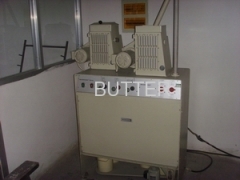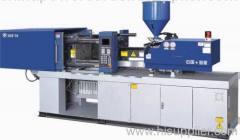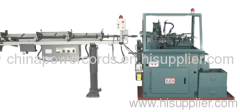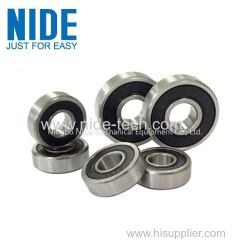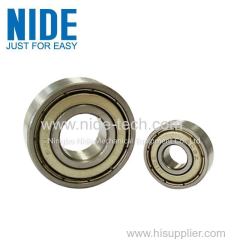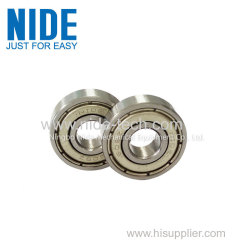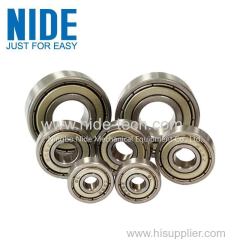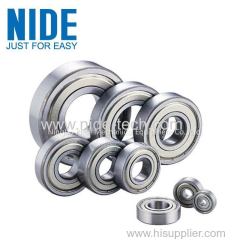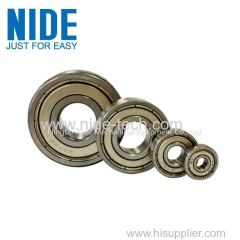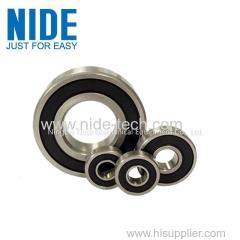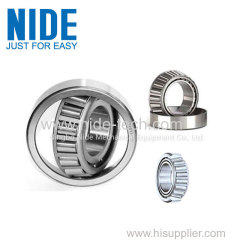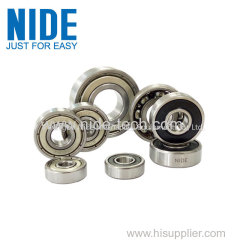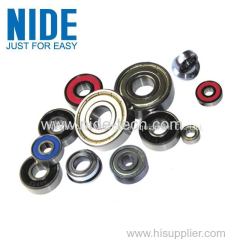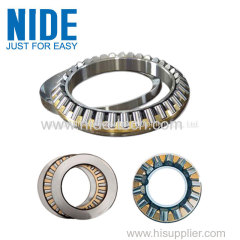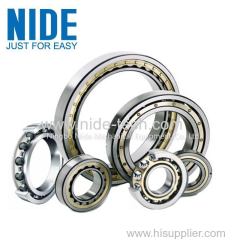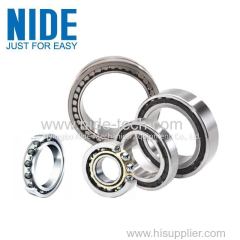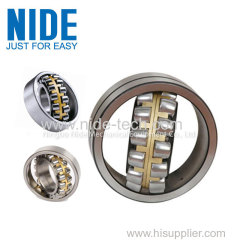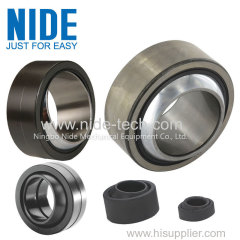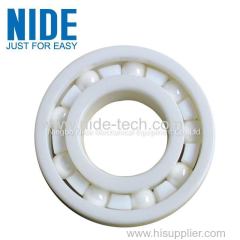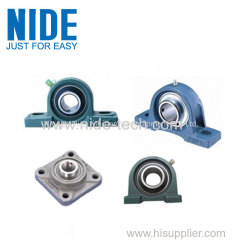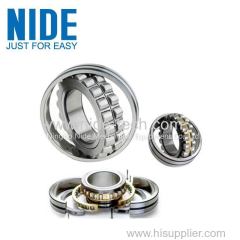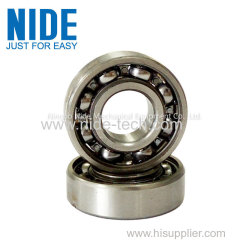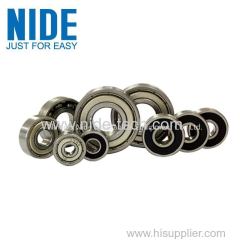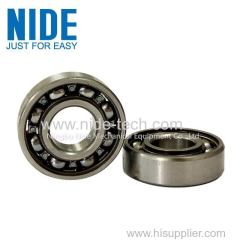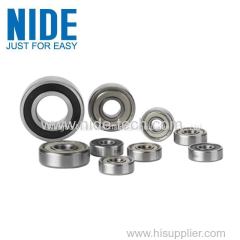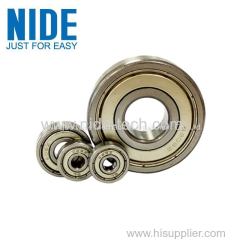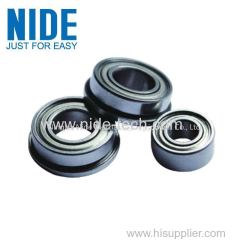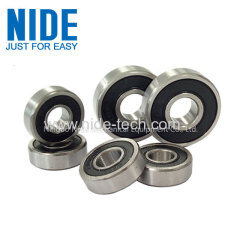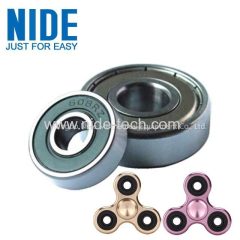
|
Ningbo Nide Mechanical Equipment Co., Ltd.
|
Inch R series Groove ball bearings
| Price: | 0.5 USD |
| Payment Terms: | T/T,L/C |
| Place of Origin: | Zhejiang, China (Mainland) |
|
|
|
| Add to My Favorites | |
| HiSupplier Escrow |
Product Detail
1.Various of groove ball bearings with different specifications.
2.Product according to customers'requirement.
We could design and manufacture ball bearing according to your drawing and specified requirements. Welcome to inquiry. Competitive price and high quality.
| Bearing Specification Inch R Series |
Basic Bearing No. | Bore | Outer Diameter | Width | Radius mm inch | Basic Load | ||
Open | Shield | Dynamic | Static | ||||
R156 R166 R3 R3A R168 R188 R4 R4A R6 R8 R8-7 R10 R12 99502H | 4.763 .1875 4.763 .1875 4.763 .1875 4.763 .1875 6.350 .2500 6.350 .2500 6.350 .2500 6.350 .2500 9.525 .3750 12.700 .5000 11.113 .4375 15.875 .6250 19.050 .7500 15.875 .6250 | 7.938 .3125 9.525 .3750 12.700 .5000 12.700 .5000 9.525 .3750 12.700 .5000 15.875 .6250 19.050 .7500 22.225 .8750 28.575 1.1250 28.575 1.1250 34.925 1.3750 41.275 1.6250 34.925 1.3750 | 2.78 .1094 3.18 .1250 3.97 .1562 4.98 .1960 3.18 .1250 3.18 .1250 4.98 .1960 5.56 .2188 5.56 .2188 6.35 .2500 6.35 .2500 7.14 .2812 7.94 .3125 ...... | 3.18 .1250 3.18 .1250 4.98 .1960 4.98 .1960 3.18 .1250 4.76 .1875 4.98 .1960 7.14 .2812 7.14 .2812 7.94 .3125 ...... 8.73 .3438 11.11 .4375 11 .4331 | 0.1 .004 0.1 .004 0.15 .006 0.15 .006 0.1 .004 0.15 .006 0.2 .008 0.3 .012 0.3 .012 0.3 .012 0.3 .012 0.6 .024 0.6 .024 0.6 .024 | 0.395 0.710 1.31 1.31 0.268 0.83 1.48 2.34 3.30 3.912 3.912 4.605 7.246 7.75 | 0.143 0.268 0.49 0.49 0.136 0.37 0.615 0.885 1.40 2.245 2.245 2.774 4.445 3.60 |
* Width RS & 2RS=5/16 inch7.938mm
# Width RS & 2RS=11/32 inch8.731mm
What is ball bearing?
Ball bearings, also known as anti-friction bearings, are small metallic or ceramic spheres used to reduce friction between shafts and axles in a number of applications. Ball bearings are often used in a series to absorb the weight placed on a moving part, or in individual cages to reduce friction in axle assemblies. Most are manufactured to meet very exacting standards of roundness, since any deformation can cause the moving parts to fail unexpectedly.
Manufacturing ball bearings is surprisingly similar to forming balls of dough. A supply of metal wire approximately the same diameter as the bearings is placed in a machine with two plates designed as hemispheres. When the two halves are brought together forcefully, a rough metal ball is formed. The problem is, some additional metal shards called flashing still remain. The balls are then placed in another machine that removes the flashing to create a perfect state of roundness.
This second machine consists of two grooved plates, one with an open notch to receive the ball bearings. As this machine fills with unfinished balls, the upper grooved plate begins to twist in different directions over the immovable bottom plate. This action is similar to a cook using his or her hands to form balls of dough. The first run through this machine removes the flashing and helps the bearings become fairly uniform in size.
A second run through the same machine adds a lubricating liquid and abrasives to the mix. The ball bearings are ground down to a precise size by the action of the abrasives. Once the balls have reached an acceptable size and uniformity, a third run uses a polishing agent to give them a friction-reducing shine. All of the bearings are given one final inspection to check for imperfections before they are approved for use in other applications.

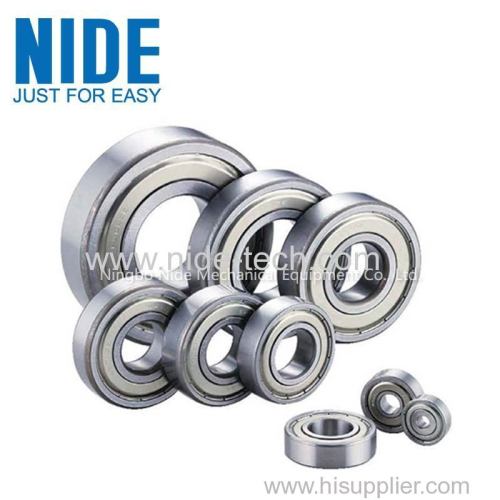


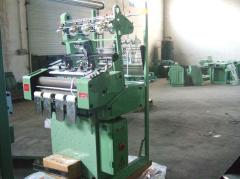
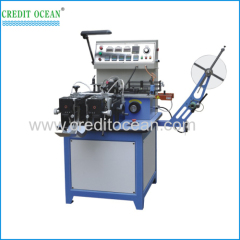
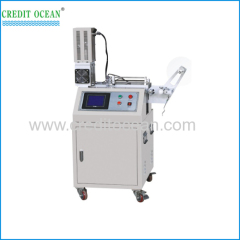
.jpg)

